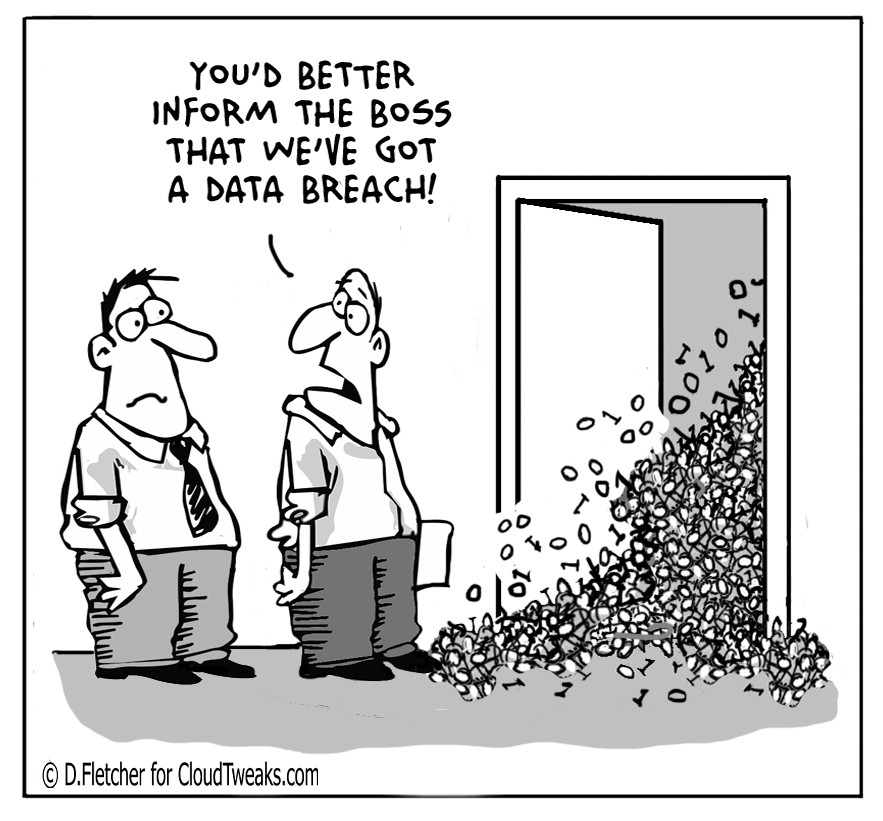In response to the COVID-19 pandemic, global businesses have restructured operations to accommodate remote work and telecommuting. Humanity has collectively separated and isolated to prevent the virus’s spread. In under a couple weeks, organizations that were once entirely in-person and on-site shifted to off-site experiences.
This event is both impressive and unprecedented, and there’s no question it’s profoundly impacting the current state of business. But while there are many positives to infer, there are negatives, too. One of the most prominent being that remote work, cloud technologies and digital content exchange are all extremely vulnerable. In an age where cyberattacks are commonplace and attackers are wreaking havoc on the business world, that’s a scary thought.
How are the systems and documents people are creating — at home and online — secure? What does this move to remote work mean for email, online materials and media?
Undoubtedly, one solution stems from artificial intelligence (AI) cybersecurity platforms — or more accurately, AI-focused security.
Modern cybersecurity systems are already robust and reliable. The biggest problem is keeping up with hackers by fending off new and more sophisticated attacks. Of course, another element involves social engineering, where people are tricked into bypassing security through phishing attempts and similar actions.

AI can provide immense benefits by filling in the gaps, supplementing traditional security systems in various ways. Big data, especially contextual information, will go a long way toward helping those artificial systems identify and deal with new threats. Like any form of knowledge, this data will reveal trends, patterns and other insights into the world of cybercrime:
One of the simplest ways to fend off phishing and social engineering attacks is to strike the source. By eliminating potential contenders and keeping the content away from vulnerable employees and users, the risk is diminished.
That’s precisely what IRONSCALES does. An AI control system monitors the affected email account, using specific algorithms to detect fraudulent or phishing-related communications. When it discovers something, the system removes the email from the inbox to stop the attack. AI platforms like this enable a first and instant response to potential threats.
Attacks can come from anywhere, anytime, which is why security solutions must be always-on. Humans, by nature, cannot always be available. We have to eat, sleep and take breaks. AI, on the other hand, runs on computers and can be ever-vigilant.
Barring a hardware or software failure, once you flip the on-switch, AI remains active indefinitely. That’s crucial to preventing attacks and is unprecedented in the cybersecurity world, going beyond real-time monitoring and live updates. AI solutions can respond and react to events near-instantly, but for that to work, the system must be continually on.
Security’s always-on nature helps most in the cloud and collaborative spaces. Many secure and sensitive documents hosted in the cloud are vulnerable, but not in the way one might think. Even something straightforward — like one user accessing another’s account, terminal or online content — can pose major threats. This issue is especially prominent in medical and law fields, where large teams share highly sensitive information.
Traditionally, security solutions offer monitoring and firewall tools. They provide detection by identifying potential threats, anomalous users and other security concerns. But they only allow security teams a reactionary opportunity, enabling a response to issues after discovery and damage occur.
These solutions still exist today, enhanced via Machine Learning and AI. AI and real-time monitoring shift power back into the security team’s hands, allowing them to be proactive. These systems are almost more predictive than conventional applications.
To give an example, when the system discovers a user accessing content or information they’re not authorized for, it can limit their account until IT can review with the individual. When unauthorized users are detected altogether, they can be immediately shut down and blacklisted. A system can instantly respond to other suspicious behavior or events to decrease threats.
The result is two-fold — attacks are thwarted, yet the entire system remains available to those who need it with little to no service interruptions.
Examples of the technology include Paladion, Darktrace, Vectra AI, Cylance and many others. Many organizations across the globe are already utilizing these platforms.
Security is often an afterthought. Engineers build the system or network first and layer protection on top to fill in potential issues. It should be the other way around — where security is implemented first and built into the system’s foundations to maximize efficiency and reliability. This method provides a seamless, non-siloed platform for detecting threats and reacting in real-time.
Google’s Chronicle employs AI to discover “embedded threat signals” using “proprietary data sources, public intelligence feeds” and similar data. It allows teams to react to security issues faster. Plus, the system grows more accurate over time as it ingests more information. It’s baked right into the platform and designed to flag anomalies and potential threats based on behavior, known data and trends. That also means the AI is specific to the system and knows what does and doesn’t look right.
AI cybersecurity solutions show the most significant potential in using big data and existing information to provide better visualizations and reports on security threats. That means analytics-driven machine learning platforms give a complete window into the networks and environments where they are installed. It’s about having the whole picture instead of reacting to one puzzle piece. Security teams and executives can see precisely where security is lacking and why.
They can identify underlying issues, like authentication Vulnerabilities, weak users or applications, and even external problems — like mobile devices. This information collectively aids in building profiles about trends, people and events specific to the system, which substantially boost security if employed adequately.
Businesses could identify what parts of their site or platform attackers are hitting most. Maybe hackers are targeting a login system through brute force attacks? Perhaps the sales team has seen an influx of phishing attempts? Maybe someone in-house has been exhibiting a lot of suspicious behavior while accessing internal systems and applications?
These examples require a complete data profile before a company can react, especially when dealing with in-house events. Businesses want to be sure of what’s happening before they respond. Yet, they still want to respond fast enough to prevent or mitigate more severe damage to the system and organization.
Experts expect worldwide cybersecurity spending to reach $133.7 billion by 2022. Furthermore, Capgemini predicts 63% of organizations will deploy AI in 2020 to improve cybersecurity, with the most popular application being network security. These statistics show that organizations understand AI cybersecurity’s value more than ever.
Considering the growing sophistication and ever-increasing prevalence of threats, it’s clear that smarter, more accurate and more capable protections will be necessary going forward. Utilizing AI for cybersecurity is the answer.
By Kayla Matthews





